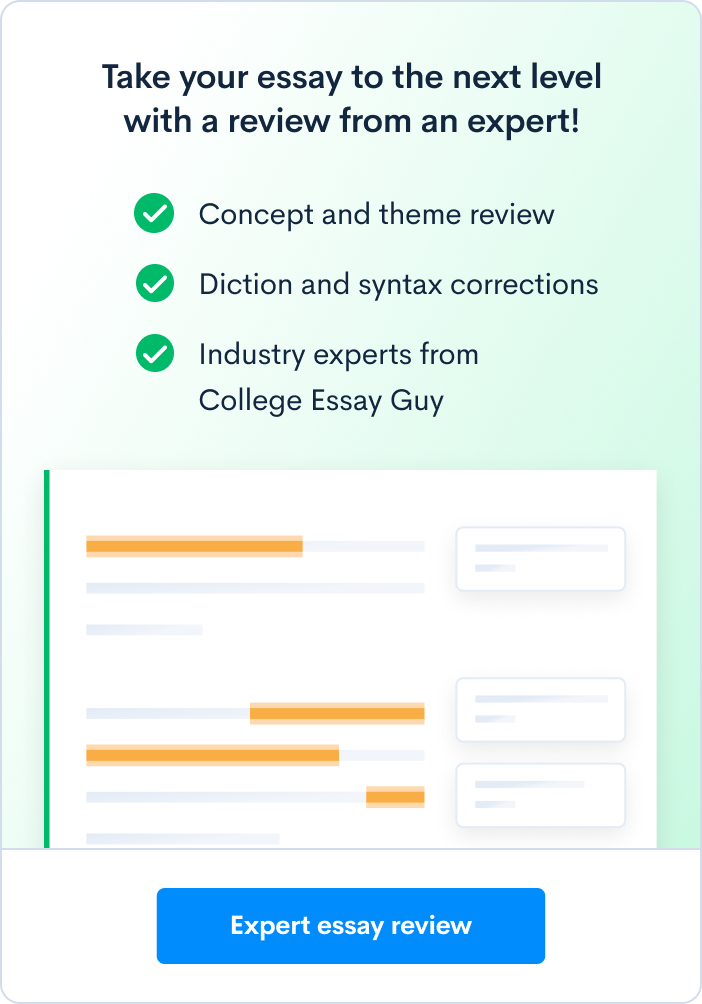Harvey Mudd Essay Example By An Accepted Student
If you’re a STEM student who can’t bear to part with the humanities, look no further than Harvey Mudd College! Just an hour away from Los Angeles and on the same campus as four other colleges of the Claremont Consortium, HMC is a West Coast magnet for aspiring engineers and scientists who also seek unrivaled opportunities in less technical subjects. Famous for pranking, a rivalry with nearby Caltech, and a flagship Clinic Program that blends academics with industry work, HMC is a great place to attend.
As with most highly selective colleges, essays are often the deciding factor in admissions. In this post, we’ll be looking at an essay a real student submitted to Harvey Mudd. We will also cover what the essay did well and where it could be improved to give you an idea of how to craft your essays.
Please note: Looking at examples of real essays students have submitted to colleges can be very beneficial to get inspiration for your essays. You should never copy or plagiarize from these examples when writing your own essays. Colleges can tell when an essay isn’t genuine and will not view students favorably if they plagiarized.
Read our Harvey Mudd essay breakdown to get a comprehensive overview of this year’s supplemental prompts.
Harvey Mudd Example Essay
Prompt: Many students choose HMC because they don’t want to give up their interests in the Humanities, Social Sciences and the Arts – or HSA as we call it at HMC. Briefly describe what you’d like to learn about in your dream HSA class. (500 words)
“Politics intruded on science.” That was the tagline of a New York Times op-ed by Dr. Rod Schoonover, a senior analyst at the State Department. He had just resigned because the White House blocked his paper on the threats climate change poses to national security.
Politics and science have been inextricably linked for centuries, and strong relations between the two can revolutionize our world. Unfortunately, such relations have soured: claims of “fake news” subvert data and delegitimize reporters. It is now imperative that all scientists are as well-versed as Schoonover was in his op-ed, so that we can salvage the relationship between science and politics. The HSA course I am suggesting, “From Galileo to the Green New Deal: STEM Advocacy Through a Governmental Lens,” would focus on this connection.
The first half of this course would study the history of struggles between government and science from the 1500s to the present day. This history would start off with the Scientific Revolution, a conflict between the old ideology of the Catholic Church, a religious and political body, and the new ideology of leading scientists.
The history component of this course would conclude with modern conflicts between science and politics, including the climate change debate and the Green New Deal, the overuse of antibiotics in farms and medical treatments, or the addictive properties of opioids and their propagation in Middle America. All of these current issues have one thing in common: through science, we have identified a problem that exists and how to resolve it, but a lack of communication prevents us from taking concrete action.
The second half of this course would focus on improving students’ communication skills by applying the rhetoric of older scientists to modern-day controversies. At this point, students would study a variety of scientific writers and their argumentative techniques.
These rhetorical strategies are just as varied as the topics that these scientists wrote about. For instance, Galileo used Simplicio, a fictional character modeled after two philosophers who disagreed with Galileo, to present (and contradict) existing geocentric beliefs in Dialogue. Charles Darwin introduced his theory of evolution with staggering detail and a conversational tone in The Origin of Species, anticipating the backlash he would receive from religious leaders. Rachel Carson combined an informative tone with pathos to warn readers of chemical pesticides in Silent Spring. Armed with these techniques, students would complete a final project, writing (and potentially publishing) an article like Dr. Schoonover’s, explaining a STEM-based argument in a political context to the public.
In this era especially, scientists must also function as politicians, crafting their words to promote their work. This course would improve the existing political landscape, dominated by alternative facts and fake news, and raise a new generation of leaders that effectively combines science and politics, which could improve our world for generations to come.
What the Essay Did Well
This essay does an excellent job of explaining an issue near and dear to this student and translating that topic into a fully-fleshed out course. They have presented themself as an all-around educated figure who is passionate about what’s going on in the world, and also identified a thoughtful solution to an important problem — exactly the kind of perspective, spirit, and promise for impact that HMC likes to see.
“Politics intruded on science,” is the op-ed quote this student begins with, showing that they stay on top of the news while also introducing their overlapping interests in science and politics. This is great because many students who look at the prompt may very well pick something utterly unrelated to STEM to discuss, expounding on their interests there. While this strategy can work too, it’s also deft to unite STEM with non-STEM and show how the two are connected.
It is evident to the reader that this student put a lot of thought into carefully crafting their class. Giving their course a catchy name is a great start (pro tip: look at HMU’s course catalog for inspiration on how they name classes). Walking the reader through the two halves of the class and the notable topics and figures they would discuss is the level of detail needed to make this course feel real and tangible. Not only that, they also include a final project and the justification for why students would be expected to complete it.
This essay is able to do a lot, but it’s important to keep the word count in mind. While this student was given 500 words to fully explain their class, Harvey Mudd now caps your response at 100 words. To achieve a similar level of success, make sure you have a clear justification for why your class is important to you and your peers, give it a creative title, mention a few key topics, and try and add some possible assignments, required readings, or field trips if you have space!
What Could Be Improved
Although this prompt is asking you to describe your proposed course, we still should be learning details about you. We can infer issues that are important to you through what you choose to focus on in the class, but there should also be some elaboration on the material’s personal significance to you. This essay could have done a better job incorporating the personal element.
A great example of where personal details and anecdotes would have enriched the essay is when the student talks about the need for improving students’ communication through the course. They explain the significance of tailoring your scientific argument to your audience to effectively communicate your point, but why does this student care so much about communication skills? Maybe they competed in debates and learned the importance of a well-tailored argument or they presented a research topic in their science class and struggled to get their point across. Bringing in their personal experience with effective communication would bring a deeper meaning to their class as we see the impact it could have on other students.
Where to Get Your Harvey Mudd Essays Edited
Do you want feedback on your Harvey Mudd essays? After rereading your essays countless times, it can be difficult to evaluate your writing objectively. That’s why we created our free Peer Essay Review tool, where you can get a free review of your essay from another student. You can also improve your own writing skills by reviewing other students’ essays.
If you want a college admissions expert to review your essay, advisors on CollegeVine have helped students refine their writing and submit successful applications to top schools. Find the right advisor for you to improve your chances of getting into your dream school!



